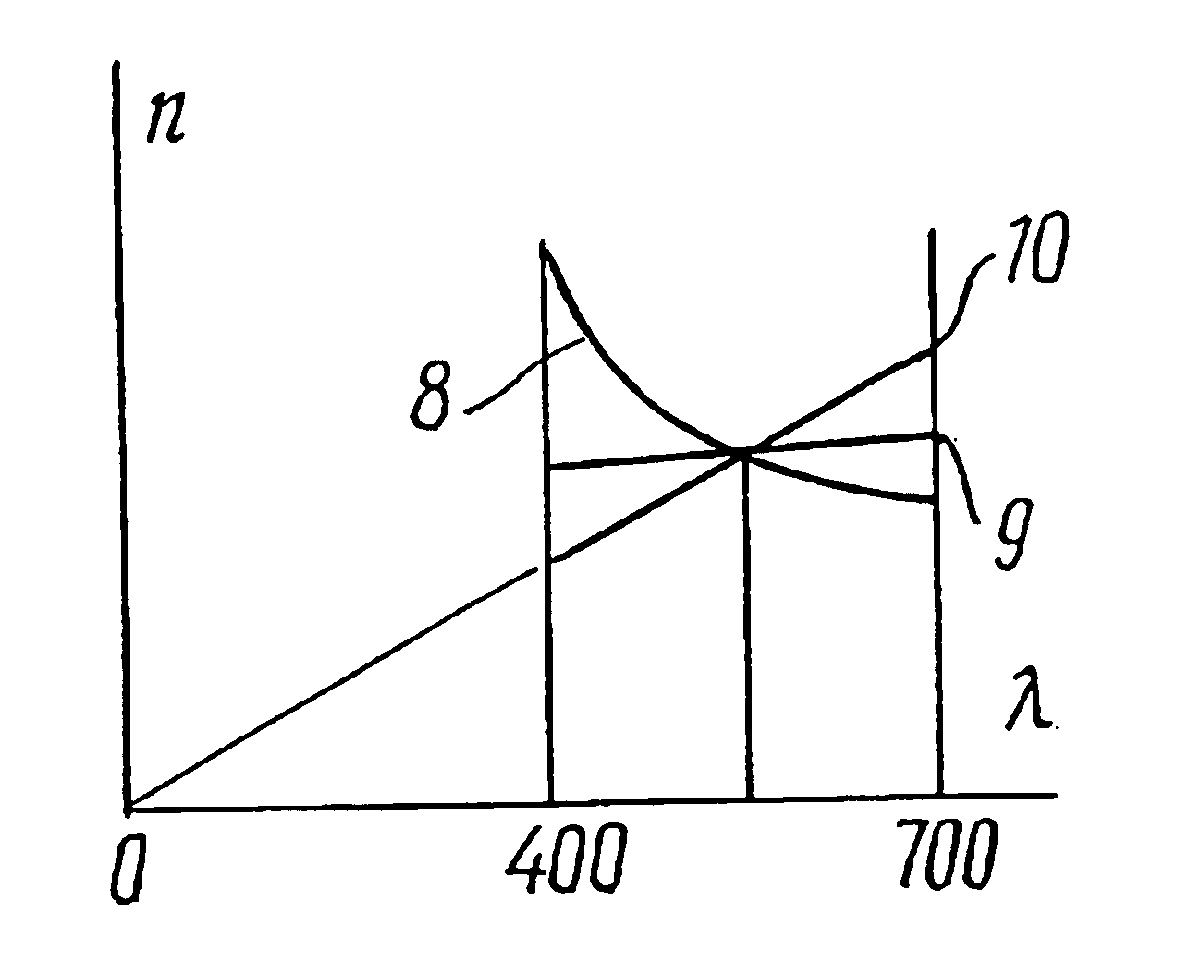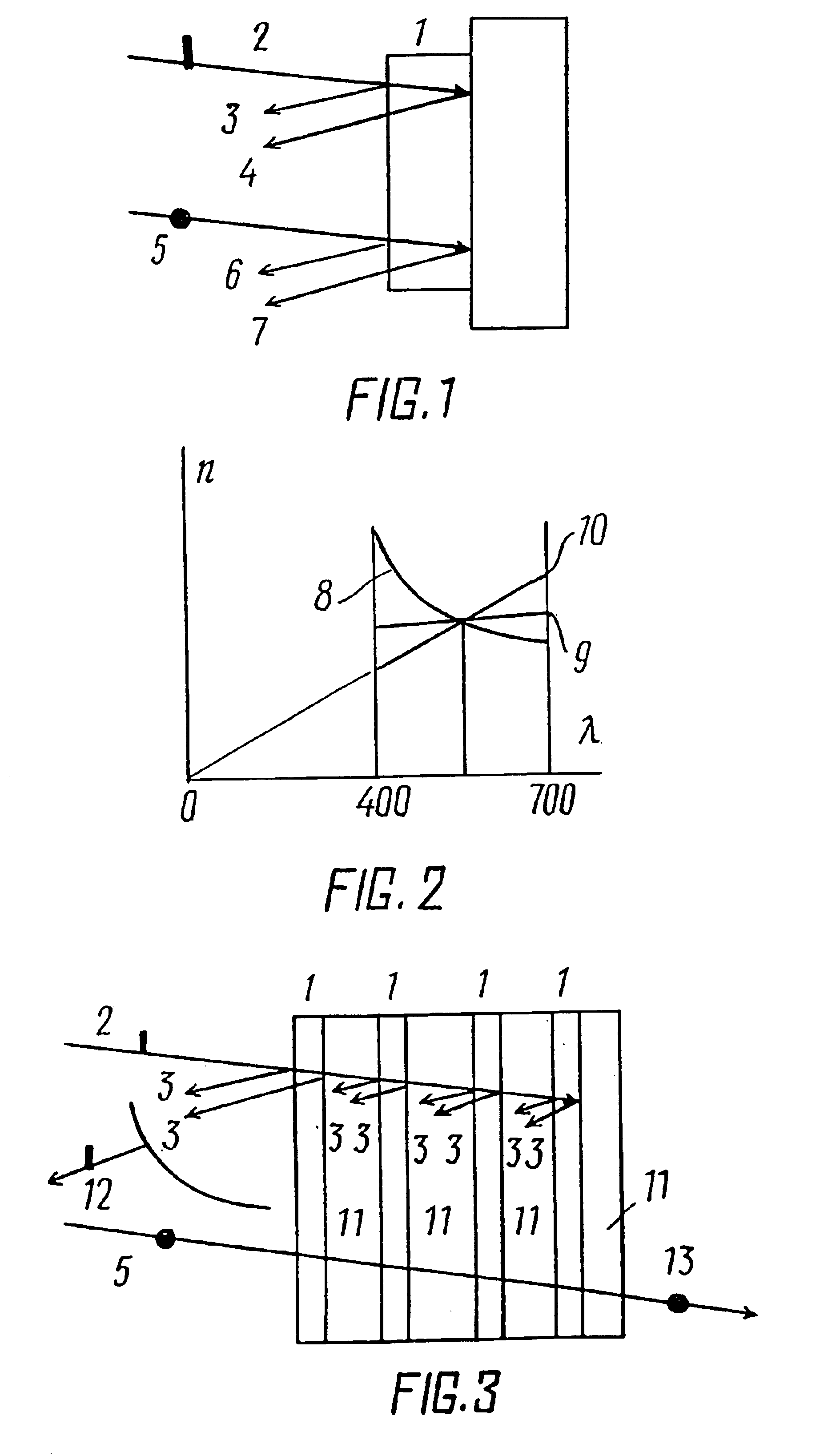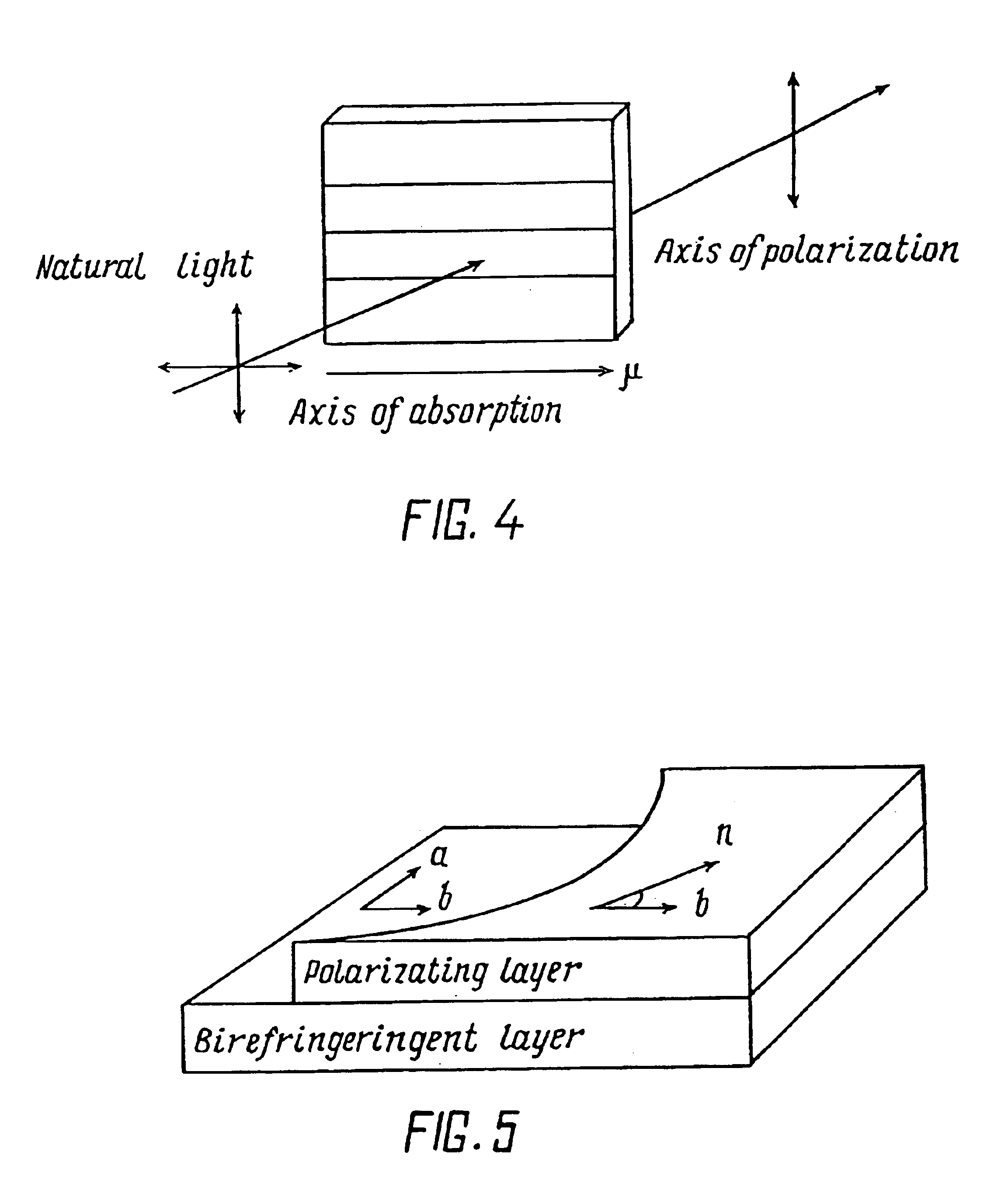Polarizer and liquid crystal display element
a technology of liquid crystal display element and polarizer, which is applied in the direction of static indicating device, instruments, organic chemistry, etc., can solve the problems of insufficient polarization capability and low contrast, high cost and low thermostability of pva polarizers, and the inability to use them in mass-production consumer goods
- Summary
- Abstract
- Description
- Claims
- Application Information
AI Technical Summary
Problems solved by technology
Method used
Image
Examples
Embodiment Construction
OF THE CLAIMED POLARIZER AND A LIQUID CRYSTAL DISPLAY ELEMENT
A Polarizer of the Interference Type
FIG. 1 shows a diagram of a one-layer polarizer of the reflecting type according to the invention, comprising birefringent anisotropically absorbing layer 1, said polarizer is characterized in that both its refraction indices (extraordinary n.sub.e and ordinary n.sub.o) are proportional to the polarized light wavelength. In the most simple version, layer 1 is adjacent from two sides to air. In more complex versions, on one of its surfaces applied is a light-reflecting coating. Layer 1 can be applied also on a substrate, and be, for example, of a transparent glass (shown in Fig. by phantom line).
Operation of the proposed polarizer of the reflecting type can be explained as follows. The non-polarized light consists of two linearly-polarized components 2 and 5, the polarization planes of which components are mutually perpendicular (these two components are conventionally separated in FIG. 1...
PUM
| Property | Measurement | Unit |
|---|---|---|
| angle | aaaaa | aaaaa |
| wavelengthes | aaaaa | aaaaa |
| temperature | aaaaa | aaaaa |
Abstract
Description
Claims
Application Information
 Login to View More
Login to View More - R&D
- Intellectual Property
- Life Sciences
- Materials
- Tech Scout
- Unparalleled Data Quality
- Higher Quality Content
- 60% Fewer Hallucinations
Browse by: Latest US Patents, China's latest patents, Technical Efficacy Thesaurus, Application Domain, Technology Topic, Popular Technical Reports.
© 2025 PatSnap. All rights reserved.Legal|Privacy policy|Modern Slavery Act Transparency Statement|Sitemap|About US| Contact US: help@patsnap.com



